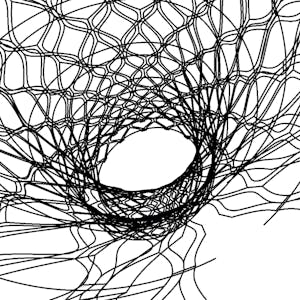Design Computing 3D Modeling in Rhinoceros with Python/Rhinoscript
Why should a designer learn to code?As our world is increasingly impacted by the use of algorithms, designers must learn how to use and create design computing programs. Designers must go beyond the narrowly focused use of computers in the automation of simple drafting/modeling tasks and instead explore the extraordinary potential digitalization holds for design culture/practice.
Structured around a series of fundamental design problems, this course will show you Python code in terms of its rules and syntax, and what we can do with it in its application and design. So, by the end of this course, you will know the fundamentals of Python and Rhino script, but importantly, through the lens of their application in geometrically focused design lessons and exercises.
Subjects covered in this course
An introduction to Design Computing as a subject and why designers should learn to code.
The fundamentals of coding in the Python scripting language. By the end of the course students will be familiar with the basic structure and syntax of this language.
The understanding and application of Rhinoscriptsyntax, a native coding language in Rhinoceros that’s imported into Python, which allows one to create and control geometries through authoring code.
The application of Procedural Logics - the structuring of coding systems to produce variable geometric form.
The output of geometries in still and animate forms.
Apply Python fundamentals including: module importing, conditionals, iteration, operators, functions, comments, booleans, tuples, and dictionaries
Apply Rhinoscript fundamentals to create geometric systems and produce variable geometric form, in 2D and 3D, rendered in still and animated formats
Produce code that produces variable geometric form (in 2D and 3D) in still image and animated formats.
Produce coded geometric systems that are reactive to changes in input parameters and attractor geometries (points, curves, surfaces)
Syllabus
Syllabus - What you will learn from this course
Week 1
The Building Blocks
Week 2
The heart of code
Week 3
Expanding possibilities
Week 4
3 dimensional structures
Week 5
Surfaces as geometry generators
FAQ
When will I have access to the lectures and assignments?
Access to lectures and assignments depends on your type of enrollment. If you take a course in audit mode, you will be able to see most course materials for free. To access graded assignments and to earn a Certificate, you will need to purchase the Certificate experience, during or after your audit. If you don't see the audit option:
The course may not offer an audit option. You can try a Free Trial instead, or apply for Financial Aid.
The course may offer 'Full Course, No Certificate' instead. This option lets you see all course materials, submit required assessments, and get a final grade. This also means that you will not be able to purchase a Certificate experience.
What will I get if I purchase the Certificate?
When you purchase a Certificate you get access to all course materials, including graded assignments. Upon completing the course, your electronic Certificate will be added to your Accomplishments page - from there, you can print your Certificate or add it to your LinkedIn profile. If you only want to read and view the course content, you can audit the course for free.
Is financial aid available?
Yes. In select learning programs, you can apply for financial aid or a scholarship if you can’t afford the enrollment fee. If fin aid or scholarship is available for your learning program selection, you’ll find a link to apply on the description page.
Reviews
Expectionally Well organized course. The contents are very apt and wonderfully taught
it's really wonderful , high disciplined managed course. thanks
I also thanks university of Michigan and prof. Glenn Wilcox
Very good course. Explains the usefulness of Python scripting in CAD Application.
it is really helpful course. perfect pace and perfect teaching by Glenn Wilcox
